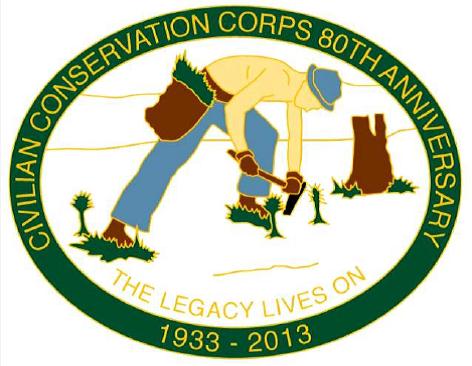History & Culture
The Chequamegon-Nicolet National Forest is located in Wisconsin's Northwoods, covering over a million and a half acres. The Chequamegon side of the forest covers about 858,400 acres in Ashland, Bayfield, Sawyer, Price, Taylor, and Vilas counties while the Nicolet side covers nearly 661,400 acres in Florence, Forest, Langlade, Oconto, Oneida, and Vilas counties.
Since 1993, these two national forests have been managed as one, with headquarters offices in Park Falls and Rhinelander.
National forests are divided into administrative units called ranger districts. The Chequamegon side of the forest comprises three districts. As with the forests themselves, several ranger districts were combined. The Glidden and Hayward ranger districts combined into the Great Divide Ranger District with district headquarters offices located at Glidden and at Hayward. The Medford and Park Falls ranger districts have also been combined into a single district, with headquarters offices at Park Falls and Medford.
The Nicolet side of the forest comprises two ranger districts. The Eagle River and Florence ranger districts have been combined into a single unit - the Eagle River-Florence Ranger District, with ranger stations located in each of those towns. The Lakewood and Laona ranger districts have also been combined into a single unit, called the Lakewood-Laona Ranger District. District headquarters offices are located in both Lakewood and Laona at the old ranger office sites.
The Chequamegon-Nicolet National Forest also hosts the Blackwell Job Corps Center, located near the town of Blackwell. Job Corps is a public-private partnership, administered by the U.S. Department of Labor, whose mission is to provide comprehensive residential education and job training program for at-risk youth, ages 16 through 24. Blackwell is administered by the Job Corps field office in Lakewood, CO.
The landscape of northern Wisconsin is one of the greatest conservation stories in the world - the restoration of the Great North Woods after the era of the timber barons and our immigrant ancestors. The United States was a vigorously growing country in the late 1800s and early 1900s. The nation's forests had been used for more than 100 years and were still continued to be used for fuel, building supplies, barns, fences, ships, railroad ties, whiskey barrels, homes, front doors, paving canals, churches, hospitals - the list is very, very long.
Our great country was built on our great forests. But the forests were not endless and in the late 1800s and early 1900s, the Great North Woods were virtually non-existent. However, the land was now cleared and deemed to be as good a place as any for the dreams of European immigrants who came by the thousands to live, farm and hopefully prosper. If we fast forward to the 1920s and 1930s, many farmers in northern Wisconsin could not afford the taxes on their lands during hard economic times, and so forfeited or abandoned their lands to county governments. The counties in turn sold these lands to the federal government and the Chequamegon and Nicolet National Forests were born in the 1930s from those over cut, burned over, and farmed out lands.
During the hard economic times of the Great Depression, young men came to work in the Civilian Conservation Corps (CCC). The Forest Service's massive reforestation efforts by the CCC boys as well as careful stewardship of the new forest growth more than 80 years have provided the people of this country with 1.5 million acres of beautiful forest -albeit a young forest. However, beyond the beauty is a forest that is in still need of restoration. The mix of tree species is the result of what the timber barons and farmers left us when they abandoned their lands - what grew up then is what we have now. The CCC boys pine plantations are now 70 or more years old. Much of the forest is even-aged, that is, the trees are all the same age even though some trees are bigger than others. If you walk into a stand of hardwood trees, cut down a smaller tree as well as an adjacent larger tree and count the growth rings, you will most likely see they are the same age. A healthy forest is one that contains trees of different ages and different species.
Features
Explore the Role of the CCC on the CNNF

The Civilian Conservation Corps and Chequamegon-Nicolet National Forest played big roles in the reforestation of northern Wisconsin, which in 1933 was heavily logged and burned over.
Alerts & Warnings
- Forest Road 139 Closed over Shmuland Creek From Storm
- Valhalla Recreation Area Closed 6/18 - 8/1/2024 for site improvements
- Sections of FR 164 closed to vehicles until 8/1/2024 for culvert replacements
- Recreation areas, trails, and roads open after recovery from 2019 windstorm
- Delayed- Moose River bridge closed to vehicular traffic 4/29 to 5/3
- Black Lake Campground To Re-Open 7/1/2024
- Prescribed Burning Planned for FY2024
- Closure on Forest Road 1666 (Black Lake Road) for motorized vehicles
- Safety reminders for hunting season
- Aquatic Invasive Species decontamination required at Lake Owen and Two Lakes


